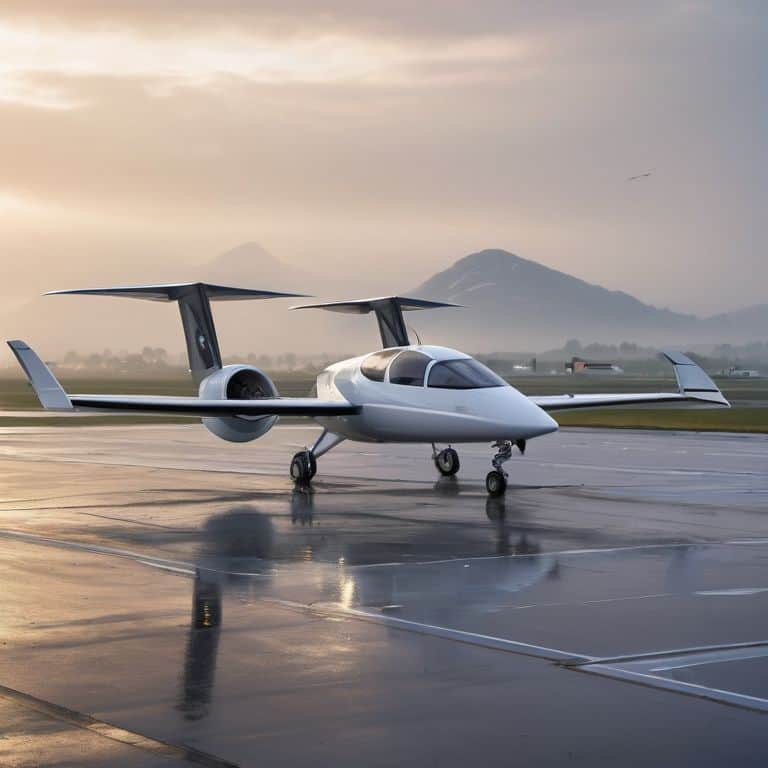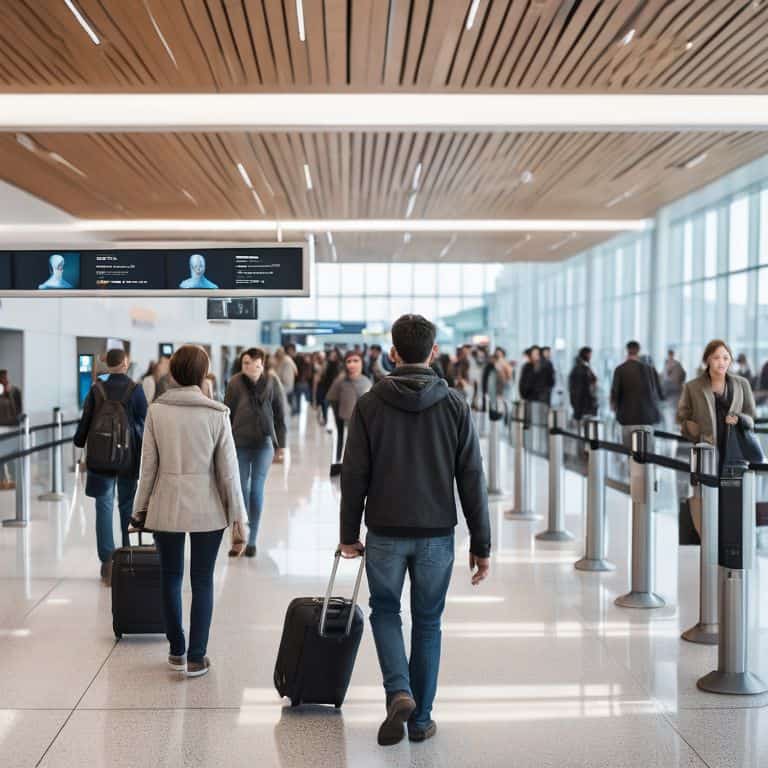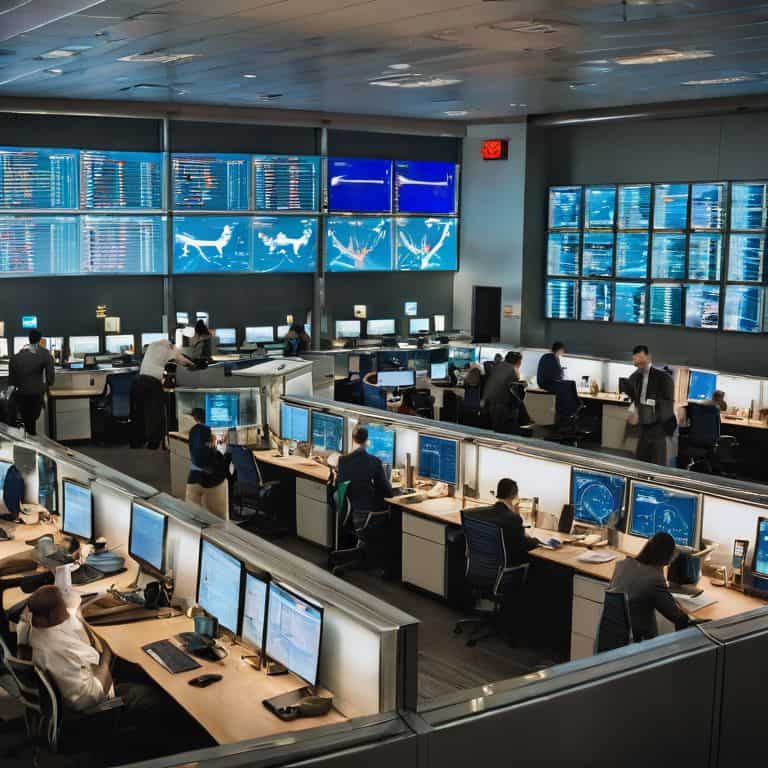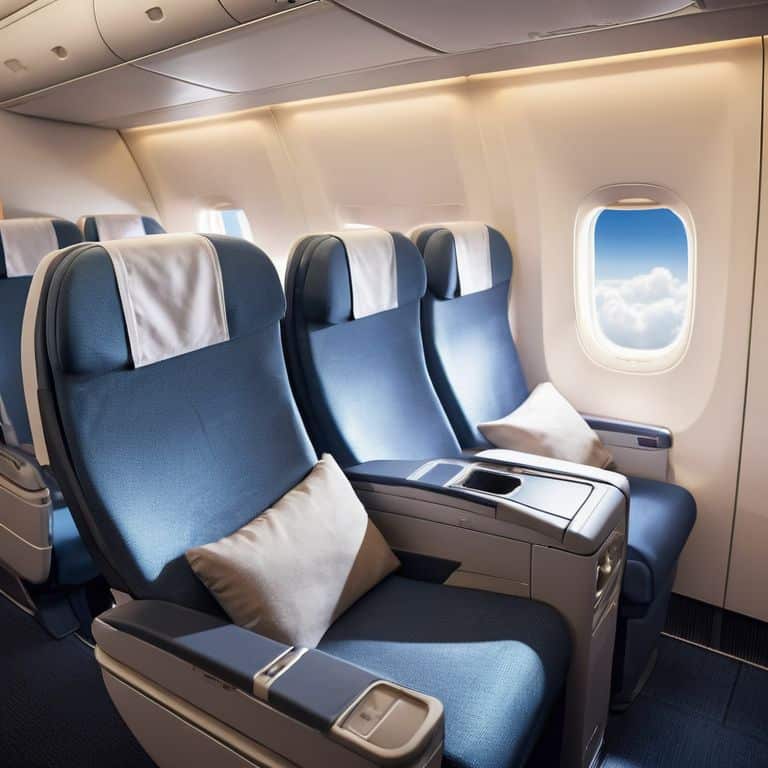I still remember the first time I witnessed the behind-the-scenes of an airport’s ground operations. The complexity of it all was mesmerizing – from the intricate dance of planes taxiing to the meticulous planning of luggage handling. It was then that I realized the true key to sustainable aviation lies not just in the planes themselves, but in the often-overlooked systems that support them. As someone who’s spent years consulting for major airports and airlines, I’ve seen firsthand how small tweaks to these systems can add up to make a significant impact on reducing emissions and improving efficiency.
As I delve into the world of sustainable aviation, I promise to cut through the hype and focus on the practical solutions that are already making a difference. I’ll share real-life examples of how smarter logistics and innovative design are being used to reduce waste, decrease fuel consumption, and create a more efficient travel experience. My goal is to provide you with a no-nonsense look at the future of flight, highlighting the unsung heroes of sustainable aviation and the often-invisible improvements that are shaping the industry. By the end of this journey, you’ll have a deeper understanding of what it takes to make air travel more sustainable and a newfound appreciation for the complex systems that make it all possible.
Table of Contents
- Unlocking Sustainable Aviation
- Revolutionizing Air Travel
- Carbon Offsetting Meets Eco Friendly Practices
- Sustainable Flight Routes Fuelled by Alternative Fuels
- 5 Key Takeaways for a Greener Skies Tomorrow
- Key Takeaways for a Sustainable Aviation Future
- Pioneering the Skies
- Embracing a Greener Tomorrow
- Frequently Asked Questions
Unlocking Sustainable Aviation
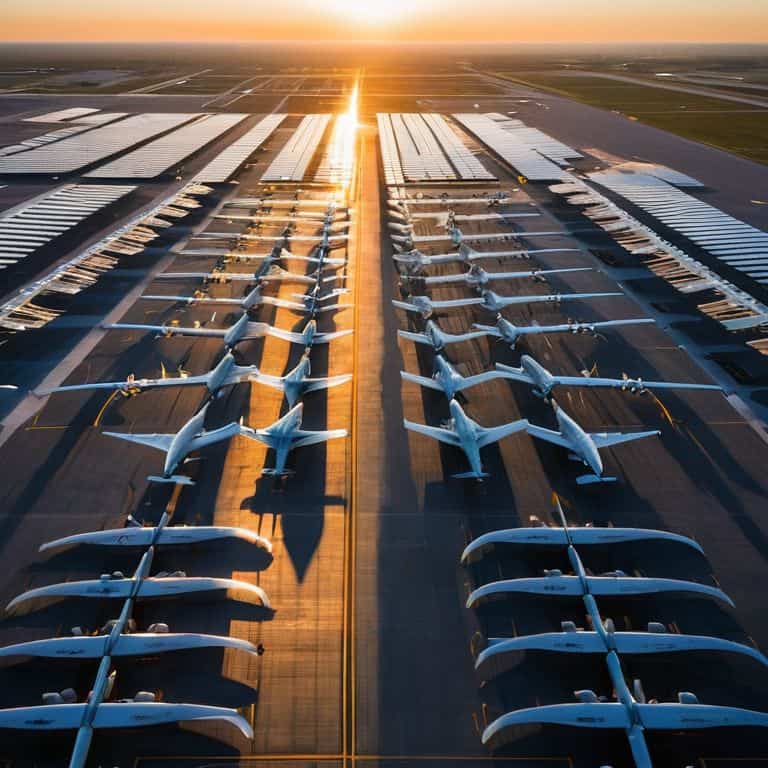
As I delve into the world of green aviation technologies, I’m excited to see the impact of innovative designs on flight efficiency. One area that fascinates me is the implementation of renewable energy for airports, which can significantly reduce carbon emissions. By harnessing solar or wind power, airports can decrease their reliance on fossil fuels and create a more environmentally friendly atmosphere.
The introduction of carbon offsetting in air travel has also been a game-changer. This practice allows airlines to compensate for their emissions by investing in projects that reduce greenhouse gases elsewhere. It’s a clever way to balance the environmental scales and make air travel more eco-friendly. I’ve seen airlines adopt this approach with great success, and it’s encouraging to see the industry take responsibility for its environmental footprint.
As we look to the future, I’m eager to explore the potential of alternative fuels for aircraft. These innovative fuels have the potential to drastically reduce emissions and make air travel more sustainable. By investing in research and development, we can unlock new possibilities for sustainable flight routes and create a more environmentally conscious industry.
Green Aviation Technologies Take Flight
As I delve into the world of sustainable aviation, I’m excited to see green aviation technologies being integrated into mainstream flight operations. From more efficient engines to advanced aerodynamics, these innovations are making a significant impact on reducing emissions and fuel consumption.
The use of sustainable fuels is another area that holds tremendous promise for the future of aviation. By leveraging alternative energy sources, airlines can significantly reduce their carbon footprint, making air travel more environmentally friendly.
Renewable Energy Powers Airport Efficiency
As I watch airport ground operations, I’m fascinated by the sustainable energy sources being integrated into daily activities. From solar panels to wind turbines, these innovations are significantly reducing the carbon footprint of airports. I’ve seen airports invest in renewable energy to power their facilities, and it’s amazing to think about the impact this can have on a global scale.
The use of biogas generators is another exciting development, allowing airports to convert waste into energy. This not only reduces waste disposal costs but also provides a clean source of power for airport operations. It’s innovations like these that will pave the way for a more environmentally friendly aviation industry.
Revolutionizing Air Travel

As I delve into the world of green aviation technologies, I’m excited to see how they’re transforming the industry. One area that’s showing great promise is the development of alternative fuels for aircraft. These innovative fuels have the potential to significantly reduce emissions, making air travel more eco-friendly. I’ve had the chance to explore some of the cutting-edge research in this field, and I’m impressed by the progress being made.
The implementation of renewable energy for airports is another crucial step towards reducing the carbon footprint of air travel. By harnessing the power of solar and wind energy, airports can decrease their reliance on fossil fuels and create a more carbon-neutral environment. This not only benefits the environment but also helps to reduce operational costs for airlines. As someone who’s passionate about urban planning photography, I appreciate the aesthetic appeal of solar panels and wind turbines integrated into airport design.
As we look to the future of air travel, it’s essential to consider the role of sustainable flight routes in minimizing emissions. By optimizing flight paths and reducing fuel consumption, airlines can make a significant impact on the environment. I’ve seen firsthand how eco-friendly airline practices, such as carbon offsetting, can make a real difference. As we continue to push the boundaries of innovation in aviation, I’m excited to see the impact that these initiatives will have on the industry as a whole.
Carbon Offsetting Meets Eco Friendly Practices
As I delve into the world of sustainable aviation, I’m excited to explore how carbon offsetting is becoming a crucial aspect of eco-friendly practices. By investing in projects that reduce greenhouse gas emissions, airlines can compensate for their own carbon footprint. This approach not only helps to minimize the environmental impact of air travel but also supports innovative projects that promote sustainability.
I’ve seen how airlines are adopting eco-friendly practices that go beyond just carbon offsetting. From using more efficient engines to optimizing flight routes, these small changes can add up to make a significant difference. By combining these practices with carbon offsetting, the aviation industry can take a significant step towards reducing its environmental footprint and creating a more sustainable future for air travel.
Sustainable Flight Routes Fuelled by Alternative Fuels
As I delve into the world of sustainable aviation, I’m excited to explore the potential of alternative fuels in reducing our carbon footprint. One notable example is the use of biofuels, which can be produced from renewable resources such as plant waste or algae. These fuels have the potential to significantly reduce greenhouse gas emissions, making them an attractive option for airlines looking to reduce their environmental impact.
The implementation of sustainable flight routes fuelled by alternative fuels is a crucial step towards a more eco-friendly aviation industry. By investing in research and development of these fuels, we can create a more efficient and environmentally friendly flight network, ultimately benefiting both the airlines and the environment.
5 Key Takeaways for a Greener Skies Tomorrow
- I’ve seen how optimizing flight routes using advanced weather forecasting can significantly reduce fuel consumption, and it’s amazing to think that such a small tweak can have a huge impact on emissions
- Implementing electric or hybrid-electric propulsion systems in smaller aircraft is a game-changer, and I’m excited to see how this technology will scale up to larger planes in the future
- Airports are getting smarter, and it’s not just about the planes – I’ve worked on projects that use data analytics to streamline ground operations, reducing wait times and emissions from idling planes
- Alternative fuels are becoming increasingly viable, and it’s fascinating to see how they’re being used in combination with traditional fuels to reduce emissions – it’s a step in the right direction, and I’m eager to see more innovation in this area
- Sometimes it’s the smallest changes that add up to make a big difference, like when airlines switch to more efficient lighting or reduce food waste on board – these might seem like minor tweaks, but they’re all part of a broader shift towards more sustainable aviation practices
Key Takeaways for a Sustainable Aviation Future
I’ve seen how innovative green technologies, such as electric and hybrid-electric propulsion systems, can significantly reduce emissions and operating costs for airlines, making them a game-changer for the industry
Smarter airport operations, fueled by renewable energy and optimized logistics, are not only reducing carbon footprints but also enhancing passenger experiences through more efficient travel processes
By adopting sustainable flight routes, leveraging alternative fuels, and implementing carbon offsetting practices, the aviation sector can effectively reduce its environmental impact while paving the way for a more eco-friendly and efficient air travel experience
Pioneering the Skies
Sustainable aviation isn’t just about swapping out old engines for new ones; it’s about revolutionizing the entire ecosystem of flight, from the fuels we use to the routes we take, and that’s where the real magic happens.
Oliver Byrne
Embracing a Greener Tomorrow
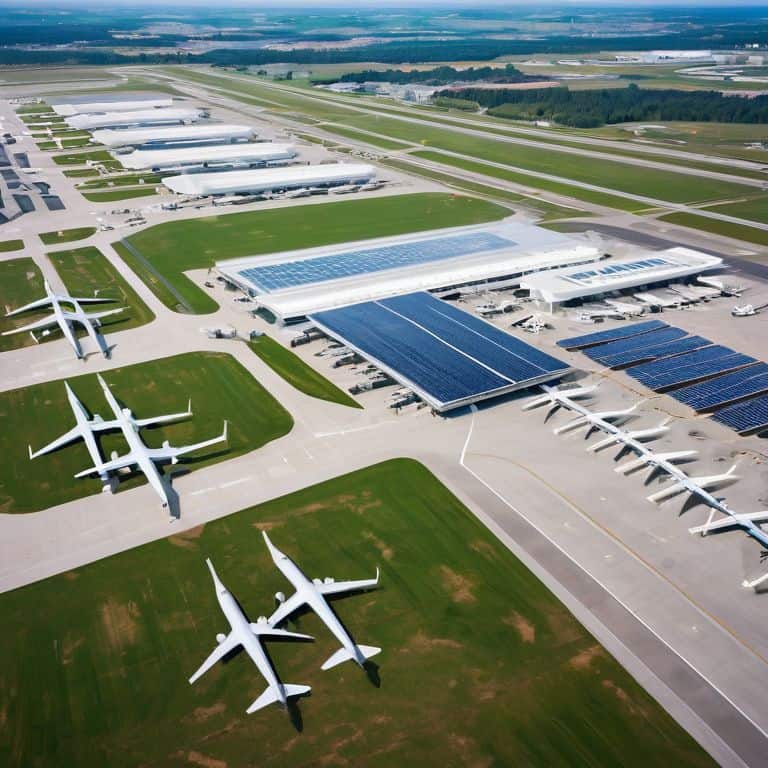
As I reflect on the journey towards sustainable aviation, it’s clear that we’ve made significant strides in unlocking a greener future for flight. From green aviation technologies to the integration of renewable energy in airport operations, the industry is embracing innovation to reduce its environmental footprint. The implementation of carbon offsetting, eco-friendly practices, and the exploration of alternative fuels for sustainable flight routes are all testaments to the aviation sector’s commitment to change. These advancements not only contribute to a more environmentally conscious industry but also pave the way for more efficient and cost-effective air travel.
Looking ahead, the future of aviation is not just about reaching new heights, but about doing so in a way that respects our planet. As someone who has spent countless hours watching airport ground operations and contributing to open-source flight tracking software, I’m excited to see how smarter systems and logistics will continue to play a crucial role in this transformation. The potential for sustainable aviation to inspire broader changes in transportation and energy is vast, and I believe that by embracing these challenges, we can create a cleaner, more efficient, and more wondrous future for generations to come.
Frequently Asked Questions
How will the implementation of sustainable aviation practices affect the overall cost of air travel for consumers?
As I’ve seen in my consulting work, sustainable aviation practices can actually lead to cost savings for airlines, which can then be passed on to consumers. More efficient engines and optimized flight routes, for example, can reduce fuel consumption, lowering operating costs and potentially leading to more competitive ticket prices.
What role do governments and regulatory bodies play in incentivizing the adoption of green aviation technologies?
As I’ve seen in my consulting work, governments and regulatory bodies play a crucial role in driving green aviation tech adoption. They offer incentives like tax breaks, subsidies, and carbon credits to airlines and airports that invest in sustainable solutions, making it a viable business case for the industry to go green.
Can alternative fuels and electric propulsion systems truly replace traditional fossil fuels in the near future, and what are the potential limitations of these technologies?
I believe alternative fuels and electric propulsion can significantly reduce our reliance on fossil fuels, but we’re still in the early stages. While they show great promise, infrastructure and energy density challenges need to be overcome before they can fully replace traditional fuels.
